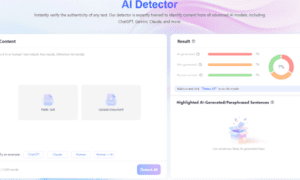Starting your investment journey in 2025? A Systematic Investment Plan (SIP) is one of the most beginner friendly ways to invest in mutual funds. Whether you’re a student, a first jobber, or someone looking to create long term wealth, SIPs offer a simple and flexible route to begin. You don’t need to time the market or save a lump sum just invest a fixed amount every month and watch your wealth grow over time.
Key Takeaways
- SIPs allow you to invest small, fixed amounts regularly in mutual fund schemes.
- They offer market linked growth potential with the benefit of rupee cost averaging.
- You can start SIPs with as little as ₹100 per month.
- Setting financial goals helps decide the right SIP amount and duration.
- SIPs can be started and managed online through mobile apps.
- Choosing the right mutual fund category based on risk profile is essential.
- SIPs are flexible pause, top up, or stop based on your financial situation.
What Is an SIP?
A Systematic Investment Plan is a method of investing in mutual funds where you contribute a fixed amount at regular intervals typically every month. Instead of making a one time investment, SIPs allow you to invest small amounts over time, making it easier to stay disciplined and aligned with your financial goals.
Through SIPs, you benefit from rupee cost averaging and the power of compounding, especially when you stay invested for the long term. SIPs are suitable for investors with varying risk profiles and income levels and are commonly used for goals like retirement, education, or wealth creation.
How to Set Financial Goals Before Choosing Your SIP Amount
Before starting an SIP, identify your financial goals. Are you saving for higher education, a vehicle, or long term retirement planning. Knowing your goal helps you determine how much to invest and for how long. Use SIP calculators available on mutual fund websites to estimate monthly contributions based on your investment horizon and expected returns. This ensures your SIP is aligned with a specific purpose, helping you stay consistent over time.
KYC Documents Required to Start an SIP in 2025
To invest in mutual funds, you must complete Know Your Customer (KYC) formalities. Documents needed:
- PAN Card
- Aadhaar Card
- Passport sized photograph
- A bank account and a cancelled cheque
KYC can be completed online via e KYC or video KYC offered by SEBI registered platforms or intermediaries. Once done, you can begin SIPs across multiple schemes from the comfort of your home.
How to Choose the Right Mutual Fund for Your Risk Profile
Mutual fund categories vary by risk and time horizon:
- Debt Funds: Suitable for short term goals and low risk investors.
- Hybrid Funds: A mix of debt and equity ideal for moderate risk investors.
- Equity Funds: Higher risk but potentially higher returns best for long term goals and risk tolerant investors.
Choose based on your investment timeline, goal, and risk appetite. For example, if you are planning a trip in two years, debt funds may be better. For retirement 20 years away, equity funds could be more suitable.
Direct vs Regular Plans: Which to Choose?
- Direct Plans: You invest directly with the mutual fund house. These plans have lower expense ratios since no distributor is involved. Suitable for confident, self directed investors.
- Regular Plans: Offered through distributors or platforms. They include a commission, reflected in a slightly higher expense ratio. Suitable for those who need execution support but not advice.
SEBI mandates clear disclosure of plan types and costs, allowing you to make an informed decision.
Automating SIPs and Tracking Investments
Once your SIP is set up, you can automate payments via bank auto debit. Most AMCs and platforms offer mobile apps to:
- Modify or pause SIPs
- Track fund performance
- Set investment reminders
- Download account statements
This ensures hassle free investing and better tracking of your financial goals.
When to Pause, Top Up or Stop an SIP
- Pause if you are facing a temporary cash crunch.
- Top Up if your income increases this boosts your long term wealth.
- Stop only if your financial goal is met or if a fund consistently underperforms. Avoid stopping due to short term market fluctuations.
Conclusion
SIPs are a simple, disciplined, and accessible way to invest in mutual fund investments. They help you develop healthy financial habits, invest in line with your income, and build wealth over time. Whether you are saving for a short term goal or planning long term dreams, SIPs offer a reliable route to get there one step at a time.
FAQs
Q1. What is the minimum amount to start an SIP?
Most mutual fund houses allow you to start with just ₹100 per month.
Q2. Are SIP returns guaranteed?
No. SIPs invest in mutual funds, which are market linked. Returns are not guaranteed and can vary based on market performance.
Q3. Is SIP safe for first time investors?
SIPs are suitable for beginners due to their small ticket size, flexibility, and built in discipline. While not risk free, they help manage volatility through rupee cost averaging.
Q4. How long should I continue my SIP?
SIPs work best when continued for the long term (5+ years), allowing compounding to deliver better potential outcomes.
Q5. Can I change or stop my SIP later?
Yes. You can pause, increase, or stop your SIP anytime through your investment platform or mutual fund provider.





























